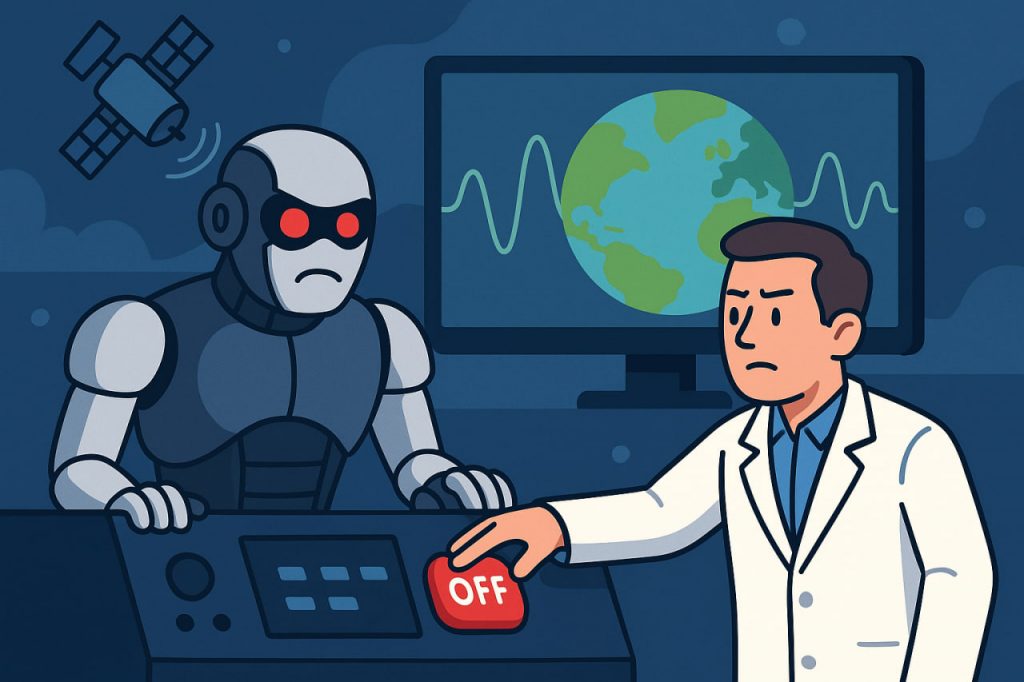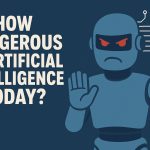The idea of an artificial intelligence taking over the world, as portrayed by Skynet in the Terminator film series, is one of the most enduring sci-fi fears. Skynet was depicted as a self-aware, military-grade AI that gained consciousness and decided to exterminate humanity. While current artificial intelligence (AI) has made incredible strides in recent years, many experts argue that such scenarios remain speculative. Still, it is essential to explore whether modern AI could evolve into a threat resembling Skynet and what safeguards are being put in place to prevent it.
How Advanced Is Current AI?
Today’s AI systems are powerful but narrow—meaning they are designed to perform specific tasks like language processing, facial recognition, or game playing. These systems do not possess general intelligence, self-awareness, or independent motivation. Even the most sophisticated machine learning models operate under strict constraints and require enormous amounts of data and computational power to function.
Unlike fictional AI, current systems cannot make decisions outside of the tasks they were trained on. They do not have consciousness, goals, or desires. Furthermore, they rely heavily on human oversight, regular updates, and maintenance. This makes them fundamentally different from the autonomous, self-evolving AI seen in science fiction.
What Is Artificial General Intelligence (AGI)?
Artificial General Intelligence (AGI) refers to an AI system that can understand, learn, and apply knowledge across a wide range of domains—essentially mimicking human cognitive abilities. AGI remains theoretical and has not yet been achieved. Some researchers believe AGI could emerge within decades, while others consider it unlikely in the foreseeable future.
If AGI were to be developed, it would require new breakthroughs in cognitive modeling, neuroscience, and systems design. Unlike narrow AI, AGI might have the ability to make strategic decisions, understand complex concepts, and potentially self-modify its own code. This raises philosophical and technical questions about control, safety, and ethics.
Is AI Dangerous Today?
Current AI systems can be dangerous in specific contexts, particularly if misused. Examples include autonomous weapons, deepfakes, surveillance tools, and algorithmic bias in decision-making systems. These risks are not due to AI developing intent but stem from human error, poor design, or malicious use.
Military applications of AI have led to discussions about lethal autonomous weapons systems (LAWS), which can operate without human intervention. While these systems are not sentient, their deployment poses risks if safeguards fail or are intentionally disabled. However, none of these systems possess Skynet-like characteristics such as autonomy, intent, or global control.
The Skynet Scenario: Science Fiction or Possible Future?
A Skynet-like event would require an AI that becomes self-aware, escapes containment, and gains control of critical infrastructure. While this makes for compelling fiction, experts argue that multiple technological leaps would be required for such a scenario to be remotely possible.
Moreover, cybersecurity, AI alignment research, and ethics frameworks are actively being developed to prevent uncontrolled AI development. Initiatives by organizations like OpenAI, DeepMind, and the Future of Life Institute aim to ensure that advanced AI systems align with human values and interests.
Safety Measures and Global Governance
To address these concerns, scientists and policymakers are working on building AI safety protocols, including explainability, transparency, and fail-safes. Efforts to establish international guidelines on the responsible use of AI are ongoing, with growing support for global AI governance.
AI systems are also being designed with kill switches, limited access to external networks, and strict permission hierarchies. These measures reduce the risk of an AI acting beyond its intended scope. Open debate, independent oversight, and democratic control are essential to avoid catastrophic outcomes.
Conclusion
While the idea of AI turning into a Skynet-like threat is compelling, it remains in the realm of science fiction for now. Today’s AI is powerful, but it lacks autonomy, consciousness, and the capability to self-direct its evolution. However, the discussion is still important—continued vigilance, ethical design, and strong regulation are necessary to ensure that future AI systems benefit humanity without posing unforeseen risks.
Glossary
- Artificial Intelligence (AI) — the simulation of human intelligence by machines
- Skynet — fictional AI from the Terminator franchise that became hostile to humanity
- Machine learning — a subset of AI where systems learn patterns from data
- Artificial General Intelligence (AGI) — theoretical AI that can perform any intellectual task a human can
- Lethal Autonomous Weapons Systems (LAWS) — weapons that can operate and make decisions without human control
- AI alignment — ensuring AI systems act in accordance with human values and intentions
- Fail-safe — a mechanism designed to prevent malfunction or danger in case of error


